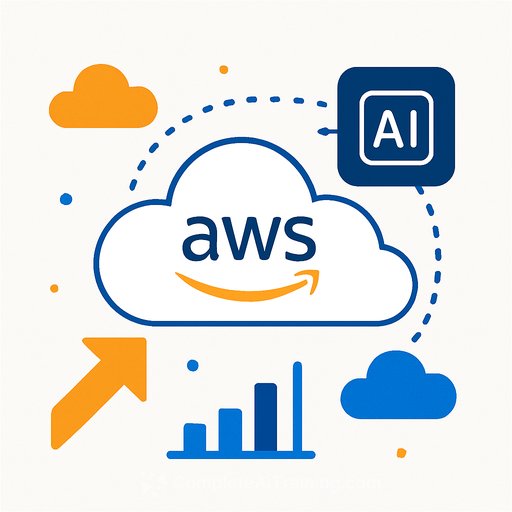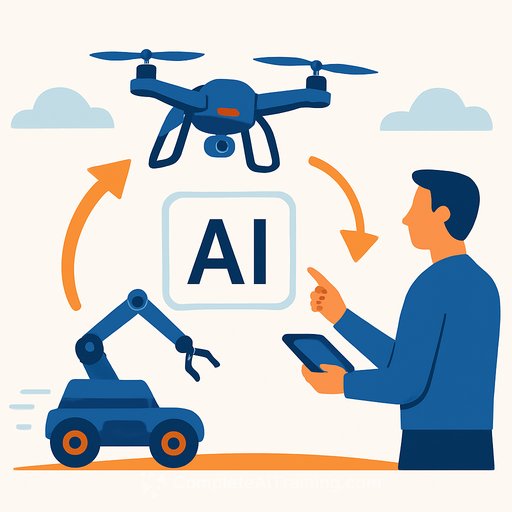AI's first bite isn't factory work - it's middle management
Everyone expected warehouse robots to replace pickers first. Instead, Amazon just cut roughly 14,000 corporate roles - about 4% of its white-collar workforce - to "reduce bureaucracy" and invest deeper in generative AI.
The signal is clear: AI is getting good at the coordination work that fills a manager's day. Status reports, updates, meeting notes, forecasts, and cross-team handoffs are now fast, cheap, and increasingly accurate with AI in the loop.
Why middle management is exposed
- AI handles routine synthesis at scale: memos, summaries, dashboards, and "who owes what by when."
- Planning and forecasting are becoming data-first, not opinion-first. Tools give leaders a shared source of truth.
- Executives can "flatten" layers when reporting is automated and decisions flow from live models, not weekly decks.
Amazon's leadership has said they'll need fewer people doing work AI can now support. Analysts at Gartner estimate that by 2026, one in five organizations will use AI to eliminate at least half of their management layers. The trend is spreading as companies chase speed and lower cost.
The market backdrop isn't friendly
Hiring has cooled, especially for early-career roles, as companies enter a "low-hire, low-fire" stance. Productivity gains let leaders do more with the same headcount - or less.
Meanwhile, job cuts continue across sectors. Recent reports show hundreds of thousands of announced layoffs this year, with tens of thousands tied to AI, automation, and "tech updates." Retail and entertainment are restructuring, and tech remains under pressure.
Context matters: fewer layers plus slower hiring means fewer rungs on the ladder. That hits managers first.
What to do now if you run a team
- Redefine the manager job: shift from "traffic controller" to "owner of outcomes." If a report can produce it, it's not the job.
- Flatten where work is routine and measurable. Keep specialist leads where judgment and context drive value.
- Automate the admin layer:
- Status updates auto-generated from tickets, CRM, and docs.
- Meeting notes and action items drafted by AI, approved by owners.
- Forecasts and plans pulled from live data, not slide decks.
- Set decision rights: who decides, with which inputs, by what deadline. AI supports the call; it doesn't own it.
- Instrument your ops: track cycle time, throughput, defect rate, and rework. Reward fewer handoffs and faster learning loops.
- Put guardrails in writing: data access, privacy, human review, and escalation for safety-critical calls.
A 30-60-90 day playbook
- Days 1-30: Map work. List recurring reports, meetings, approvals, and metrics. Kill what no longer serves a defined decision.
- Days 31-60: Automate the obvious. Pilot AI for summaries, updates, and backlog grooming. Re-scope roles around outcomes.
- Days 61-90: Expand what works. Consolidate layers where signal is strong. Tie bonuses to cycle time, quality, and owner accountability.
Career math for managers
Managers who win in this shift do three things well: they own numbers, they use AI to compress time, and they lead change without drama.
- Own a metric that touches revenue, margin, or risk. If you can't name it, fix that first.
- Build an "AI-as-analyst" workflow: you review, decide, and ship. Minutes, not days.
- Get data-fluent: SQL basics, prompt patterns, and how your systems connect.
- Strengthen judgment: customer insight, edge cases, tradeoffs. That's hard to replace.
- Document your ROI: before/after cycle times, cost per unit, error rates. Put numbers in every review and resume.
Org design cues to watch
- Teams moving from weekly business reviews to live dashboards with AI-generated briefs.
- Broader spans of control (fewer layers) where work is standardized.
- New titles that blend IC and lead work: program owner, staff-level operator, domain lead.
If you're hiring or restructuring
- Write roles as "problems to own," not "tasks to perform."
- Interview for decision speed, data use, and calm under change.
- Budget for AI-first tooling before adding headcount. Treat software as your first hire.
- Create an expert IC track so growth doesn't depend on adding layers.
This shift isn't about replacing people. It's about stripping out low-leverage work and rewarding the people who move decisions forward. If you manage, your edge is simple: tighter feedback loops, cleaner data, faster calls.
Next steps and resources
- For Powell's recent remarks and broader context on hiring trends, see the Federal Reserve's official speeches page: Federal Reserve - Speeches.
- If you want to upskill your team on practical AI workflows for reporting, planning, and operations, browse role-based programs here: Complete AI Training - Courses by Job.
Your membership also unlocks:






